Brent Hartinger's Blog, page 7
August 26, 2015
Q&A About BAREFOOT IN THE CITY OF BROKEN DREAMS (My Latest Book!)
I first wrote about the character of Russel Middlebrook in my 2003 novel, Geography Club. The story of a gay teenager, Geography Club was subsequently adapted for both stage and screen (co-starring Scott Bakula and Ana Gasteyer) and spawned a successful four-book series, the Russel Middlebrook Series.
Last year, I “rebooted” the character in a new trilogy, Russel Middlebrook: The Futon Years, about Russel in his twenties. The first book, The Thing I Didn’t Know I Didn’t Know, featured 23-year-old Russel living in Seattle, trying to make sense out of life and love. In Barefoot in the City of Broken Dreams, a stand-alone sequel out August 14, 2015, Russel and his boyfriend move to Los Angeles so Russel can try to make it as a screenwriter.
Here are my answers to questions about the book:
This book is based, in part, on your own life. True?
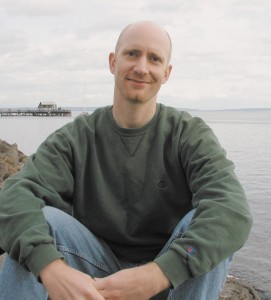 BH: It is far and away my most autobiographical book ever.
BH: It is far and away my most autobiographical book ever.
When I was in my mid-twenties, I moved to Los Angeles to try to make it as a screenwriter. I won’t say that everything in the book happened to me, because the book is fiction. The characters are all completely made up.
But the events, the details, and especially the emotions? It was very much like it is for Russel. In fact, even at the time, it felt like I was living a story in a book.
What’s this about the parallels in the book to the movie Sunset Boulevard?
BH: Well, Sunset Boulevard is the most famous (and probably the best) movie about Hollywood ever made. So now it’s virtually impossible to write about Hollywood without at least being aware of the movie, either to pay homage or to avoid looking like you’re ripping it off.
In my case, I’m definitely paying homage. I’m a huge fan of the movie, so there are a zillion Easter eggs in the book for fellow Sunset Boulevard fans. For example, the book begins and ends with Russel floating “dead,” facedown in a pool.
But Russel isn’t Joe Gillis, and Hollywood and the world have changed a lot since 1950, so the story goes in some very different directions. It also ends up in a very different place.
So Russel keeps growing up. First, he was a teenager, in a series of YA novels. Now he’s in his twenties, figuring out his love life and his career.
BH: It’s true! Russel is definitely dealing with the issues that most of us deal with in our twenties, just like he dealt with a lot of “teen” issues in the earlier books. With a gay twist, of course.
Little by little, he’s slowly figuring things out.
Incidentally, I’m proud of the fact that he’s one of the first literary characters to jump genres, from the earlier young adult books, to these newer adult books. And I’m very pleased that my readers seem happy to have made the jump with me. I didn’t plan it this way, but quite a few of my readers have literally grown up along with Russel. That’s enormously flattering.
Otto, Russel’s ex-boyfriend from The Order of the Poison Oak, is back. Was he fun to write?
BH: Words cannot describe how excited I was to bring him back, for a whole bunch of reasons.
For one thing, Otto is a burn survivor with a big scar on half of his face. I first wrote him in 2005, but even now, there just haven’t been very many disabled gay characters, in really any media. I like that he’s something different, and also that I was able to explore a little bit the role of physical appearance both in the gay community and in Hollywood.
Then there’s the fact that a lot of gay guys become really good friends with their exes—more than straight people do, I think. So I wanted to explore that too.
Plus, I just like Otto! He’s a really sweet guy, and I wanted to see what he was up to after all these years. His is one of my favorite storylines in the book, and I hope other people think so too.
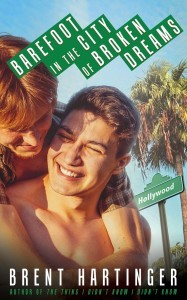 I read on your blog the rules for writing a good sequel. One of them is, “Include at least one great new character.” Is that Mr. Brander?
I read on your blog the rules for writing a good sequel. One of them is, “Include at least one great new character.” Is that Mr. Brander?BH: Every time I’m writing a sequel, I specifically sit down and think: What new character can I come up with that will shake everything up? In The Thing I Didn’t Know I Didn’t Know, that character was Vernie Rose. In Barefoot in the City of Broken Dreams, yeah, I hope that character is Mr. Brander. I also hope people are intrigued by his personal assistant, Lewis, because the two characters go together in an important way.
I especially like that Mr. Brander is complicated, that he’s not just one thing. Is he a good guy or a bad guy? What’s his deal? In the end, when all is revealed, it still depends on your point of view.
In the book, Russel is working on a film project, A Cup of Joe, a kind of post-gay movie. Does the movie project really exist?
BH: It does! It wasn’t part of my original Hollywood experience, but for the last five years, I’ve been working with some producers, developing a movie I wrote called The Starfish Scream that’s a lot like A Cup of Joe. We’re very close to getting financing, so let’s hope we get the greenlight soon.
And what do you know? If it does get made, there just might be grist for the mill of a future Russel Middlebrook book. Truthfully, all the exciting, frustrating, and interesting stuff that’s happened so far on this particular project might make a good book too.
So are you like Russel in that you consider yourself a screenwriter?
BH: I’m a screenwriter-novelist. I’ve been writing screenplays since the start of my career, and I’ve now written dozens of them, won a bunch of awards, and also had a number of those screenplays optioned (a few, like the one I mentioned above, are still in very active development right now).
But getting a movie actually made? Man, it’s just crazy. Sometimes I wonder how any movie ever gets made these days—something that’s not a sequel or a reboot, I mean. The story of turning my first book Geography Club into a movie (the screenplay for which I did not write) was just crazy. There are so many cooks in the kitchen, so many compromises. But as a wise producer-friend once said to me, “No one’s ever going to give us three million dollars to just do whatever we want.”
For whatever reason—timing? luck? talent?—my screenwriting career never took off the way I wanted it to, and my novel-writing career did. So books are mostly how I make my living, while I continue plugging away with my various movie projects.
Will there be another Russel Middlebrook movie?
BH: You’re the 50,000th person to ask me that, and the answer is…no. It’s a long, complicated story—maybe that’ll be the subject of another book too.
But honestly? I’m proud of the Russel Middlebrook Series, and I think many parts of those earlier books still hold up, but they’re also from a pretty different era. If I do get another gay-themed movie greenlit (and I hope I do very soon!), I want it to be about the things I’m writing and feeling now, the things that I think are most relevant to this moment in time. When it comes to gay themes, things are changing so quickly.
Mostly, I want to feel like my next movie is breaking new ground. I want it to feel like something no one has ever seen before!
When was the last time you went barefoot?
BH: Yesterday morning, to pick up the mail. But that was mostly because I was too lazy to put on shoes. When did I last go barefoot in a fun-in-the-sun-type way? Hmmm, years, I think. I guess I’ve moved onto the “flip-flop” phase of my life. Hopefully, that’s not a metaphor for anything!
BUY THE BOOK
 Send to Kindle
Send to Kindle
August 21, 2015
Now an Audio Book! BAREFOOT IN THE CITY OF BROKEN DREAMS
For those who have asked, an audio version of my latest book, Barefoot in the City of Broken Dreams, is now available from Audible.com.
The narrator is Josh Hurley, the great voice actor who narrated all the previous Russel Middlebrook books.
And if you’re a critic or blogger who’s interested in reviewing the audio version of Barefoot or the first book in the trilogy, The Thing I Didn’t Know I Didn’t Know, drop me an email. I have a few free review copies left!
 Send to Kindle
Send to Kindle
August 13, 2015
My New Book is Out: BAREFOOT IN THE CITY OF BROKEN DREAMS!
Today is the day! My latest book, Barefoot in the City of Broken Dreams, is released today! Read all about it here (or buy a copy, including a signed edition).
 Send to Kindle
Send to Kindle
August 2, 2015
What Does it Mean to be Gay These Days (in Movies and on TV)?
 Over the last forty years, things have changed dramatically for LGBT people. Media portrayals of LGBT characters have changed just as much. Did changing media portrayals cause the social changes? What were some of the most important gay-themed books and movies? What are some of the best ones now? What does the future hold?
Over the last forty years, things have changed dramatically for LGBT people. Media portrayals of LGBT characters have changed just as much. Did changing media portrayals cause the social changes? What were some of the most important gay-themed books and movies? What are some of the best ones now? What does the future hold?
In my weekly Media Carnivores podcast, my co-host Erik Hanberg and I discuss all this (including the little tiny role I myself played in gay media history!).
 Send to Kindle
Send to Kindle
What Makes Evil Good (in Fiction)?
 In my regular Media Carnivores podcast, my co-host Erik Hanberg and I take on the nature of evil — in TV and movies, that is!
In my regular Media Carnivores podcast, my co-host Erik Hanberg and I take on the nature of evil — in TV and movies, that is!
What makes a good villain? Does evil think of itself as “evil”? Must good always won? We discuss all this and more!
 Send to Kindle
Send to Kindle
July 14, 2015
BAREFOOT IN THE CITY OF BROKEN DREAMS: Now Available for Pre-Order!
So my latest book, Barefoot in the City of Broken Dreams (featuring Russel Middlebrook at age 24) is now available for pre-order (including signed copies with free shipping in the U.S.):
PRE-ORDER IT HERE!
Coming August 14, 2015
“There was no way moving to Los Angeles was going to make me give up my soul. After all, I’d already seen all the movies about Hollywood. I knew how things worked.”
Twenty-four year-old Russel Middebrook and his boyfriend have moved to Los Angeles so Russel can try to make it as a screenwriter.
Almost right away, in a forgotten old house off of Sunset Boulevard, Russel meets Isaac Brander, a once-famous film producer who is convinced he can turn Russel’s screenplay into a movie.
Russel knows that success can’t possibly come this easy. After all, most of Russel’s Los Angeles friends are so desperate to make it that it’s downright scary. His ex-boyfriend, Otto, is trying everything to become an actor, and Daniel, the sexy neighbor, doesn’t even need a casting couch to get naked.
So what’s the catch with Mr. Brander? Could it be that movies about Hollywood don’t tell the whole truth? But what does that mean for Russel’s soul?
Barefoot in the City of Broken Dreams, a companion book to Brent Hartinger’s The Thing I Didn’t Know I Didn’t Know, is a fast-paced, funny story about the price of fame in Hollywood: the hilarious lengths people will go to achieve it, and the touching secret to survival when things don’t work out exactly as planned.
“A sharp, canny, highly engaging tour through a Hollywood of cunning characters and colorful intrigues, guided by the clever voice of Russel Middlebrook as an eager young screenwriter trying to bust in. I was charmed by every sly, sexy page.”
– Barry Sandler, screenwriter of Making Love and Crimes of Passion
“With his trademark wit, warmth, and economy, Brent Hartinger brilliantly captures what it’s like to move to L.A. and try and make it Hollywood: the highs and the lows, the friends and the phonies, the fun and the frustration. And by the way, is it too late for me to be Russel Middlebrook when I grow up?”
– Dennis Hensley, co-screenwriter of Testosterone, author of Misadventures in the (213)
PRE-ORDER IT HERE!
 Send to Kindle
Send to Kindle
June 3, 2015
Brent Hartinger’s Rules for Writing a Good Sequel
Why are there so few good sequels? Toy Story 2 and 3? The Empire Strikes Back? Aliens?
It’s partly a question of the odds. I’ve written before how most movies and books are pretty mediocre. Since good writing is always much harder than it looks, it stands to reason that most sequels would suck too. 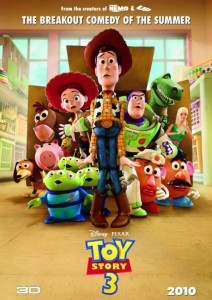
But while sequels present certain advantages — namely, they’re much easier to market — they also come with a host of unique challenges, the worst of which is sky-high expectations.
In short, whether it’s a movie or a book, how do you write a sequel without disappointing fans of the original work?
I’ve written a fair number of sequels to my books over the years, and I’d like to think I’ve learned a few things. Here are my patented rules for writing a good sequel:
(Please note: writing a dedicated trilogy or series, which is usually conceived of and plotted all at once, is a little different than writing a straight sequel, although I think most of these same rules apply.)
(1) Don’t just pick up where the last story left off.
The most obvious to place to begin a sequel is where the previous story ended. This is what fans are always clamoring for too: “What happens next?!”
I think this is a classic example of non-professionals not knowing what they really want. They liked the original story, and they think they want it to go on as it was.
The problem, of course, is that the original story is over. There was a reason it ended in the first place: the plotlines were all resolved!
The Hangover, Part 2, anyone?
To just artificially restart a satisfactorily resolved story, especially with same or similar conflicts as before, is a recipe for disaster. “No, wait!” you’re telling the reader and viewer. “There’s more I didn’t tell you! There’s an Indian graveyard underneath the first graveyard!” (in Poltergeist 2). Or, “There was a second island full of cloned dinosaurs!” (in Jurassic Park 2).
Please. It’s pathetic, and everyone knows it.
What readers and viewers really want is to once again feel the way the first story made them feel. But you can’t go home again, and you can’t step in the same river twice. Ironically, the only way to make them feel the way they did before is for you, the writer, to do something fresh and different.
(2) Give us something new.
This is the real challenge of writing a sequel. Actually, it’s the challenge of every new project, but it’s especially difficult when writing a sequel, because the pressure is so intense to just do more of the same. 
Plus, there’s that little voice in your head telling you, “The first project was a success. If I want the sequel to be a success too, it can’t be too different.”
Resist that voice! Resist the pressure! The exact opposite is true. It’s actually a paradox: the more different something is, the better your chance of writing a successful sequel.
Think about it: the best sequels completely reinvent their characters and the central story. Aliens even switched genres! (Alien is a straight horror movie, but Aliens is action/adventure). The Godfather, Part 2, has a completely different structure from The Godfather (with half the movie set in a completely different time!).
Seriously: resolving outstanding plot-lines and character arcs from the first project is the least important part of a sequel. What you want are new plot-lines and new character arcs.
In my own work, I specifically set The Order of the Poison Oak (my first sequel) outside of the first book’s high school setting, in summer camp, so it would be a completely different story. Meanwhile, for my latest sequel, Barefoot in the City of Broken Dreams, I have my main character move from Seattle to Los Angeles.
Completely new locations, completely new stories.
Again, the point of a sequel — what viewers and readers really want (even if they don’t know it) — is to make people feel the way they did the first time around. The only way to do that is to start from ground zero, at least when it comes to the plot.
(3) Make the stakes … different.
There’s a big tendency in movie sequels to give us MUCH MORE of the same. In other words, recreate the original plot, but on a grander scale. This can give the story the illusion of being “different” — in Speed 2, they’re on a cruise ship not a bus! — but most people won’t be fooled. 
There’s a better way. In the Harry Potter books and movies (which, admittedly, were conceived as a series), the stakes do rise, but more importantly, they change. Voldemort is introduced and developed in Philosopher’s Stone and Chamber of Secrets, but then in Azkaban, Voldemort takes a complete backseat, and the stakes become “smaller,” much more personal, mostly involving the backstory about Harry’s parents. With the next two books, things return to a more traditional structure, with rising stakes, but then in the penultimate book in the series, Half-Blood Prince, things get more intimate again.
Azkaban and Half-Blood Prince break the pattern of the other books and make the series much more compelling than it might have otherwise been. I think they’re literally the reason why the books succeed.
(4) Play with expectations.
People come to sequels to beloved works with lots of baggage and expectations. This can be terrifying for a writer, but it also presents a huge opportunity: viewers and readers know the previous work well, which means they expect certain things to happen.
You, the writer, can confound those expectations, and the audience will absolutely love you for it. It’s another way you can make your story seem fresh and different.
In other words, the android in Alien is the villain. So, of course, everyone (including Ripley) expects that the android in Aliens is also going to be a villain … until he turns out to be the hero.
Meanwhile, the Harry Potter series also includes a clever reoccurring bit in that each book’s Defense of the Dark Arts teacher is different. But J.K. Rowling keeps you on your toes: sometimes they’re antagonists, and sometimes they’re allies. Rowling specifically plays with our expectations each time.
Once again, things that might have seemed predictable become defiantly not so.
(5) Include at least one great major new character.
This is related to #2, above, but when I’m writing a sequel, I specifically set out to include at least one very memorable new character in each new book: someone unlike any of the characters we’ve met before. This also almost guarantees that it will shake things up and make the story feel at least a little fresh.
In my book The Elephant of Surprise, I decided to make Russel’s latest love interest a guy named Wade, an African American dumpster-diving environmentalist (with a big secret). Needless to say, he wasn’t like any other character in the series up to that point.
And in The Thing I Didn’t Know I Didn’t Know, I created Vernie Rose, a 72-year-old, extremely opinionated former screenwriter, who may now be the single most popular character in all my books.
Incidentally, because I tried so hard to make the characters indelible, they ended up being very different from my main character — exact opposites in many ways — and that took the stories in new and unexpected places.
(6) Likewise, don’t be afraid to let beloved characters go.
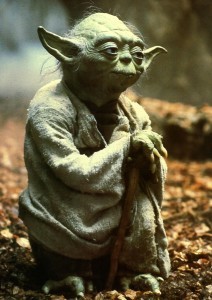 This is a hard one. Readers and viewers are drawn to certain books and movies because of the characters. Now I’m telling you to retire some of them?
This is a hard one. Readers and viewers are drawn to certain books and movies because of the characters. Now I’m telling you to retire some of them?
You have to. If you follow my rule about giving each new book or movie at least one truly memorable new character (hopefully more!), it isn’t long before your cast becomes unwieldy. Keep the essential supporting characters, but let the others go.
How can you tell if a supporting character is essential? They have an essential plot function; they’re not simply shoehorned in to make readers smile.
Yoda makes a massive impression in The Empire Strikes Back, but he barely registers as a presence in The Return of the Jedi. Why? Because he serves no real plot purpose in the latter movie. He has nothing to do.
Speaking of which, are beloved character cameos a good thing? Sure, why not? A few nods to the previous work are always fun.
(7) Try to identify what made the first project so successful, then give us more of that.
I know this sounds like a contradiction with a lot of my earlier suggestions, but it’s not. In terms of plot and characters and story, I really do think sequels need to feel fresh and different.
But there was something about the first project that made it special and successful — so successful that it’s worthy of a sequel in the first place. I said before that people are attracted to sequels because they want to once again feel the way the first project made them feel.
So what did they feel, and why? Was in the tone? The theme? The characters? Your fresh take on some tired old genre?
Try to figure out exactly what it was, and make a point to pay homage to it in your sequel … and then do what you can shake it up again and totally confound our expectations!
 Send to Kindle
Send to Kindle
May 1, 2015
Cover Reveal: BAREFOOT IN THE CITY OF BROKEN DREAMS (My Next Book, Out August 15th)
Here it is! The jacket to my next book, Barefoot in the City of Broken Dreams (coming in August 2015, available for pre-order in June). 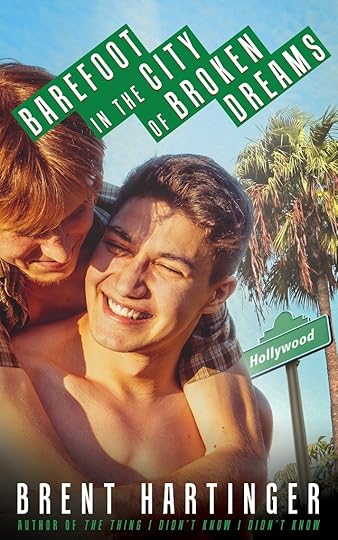
What’s this book about? It’s a stand-alone book, but it also picks up after The Thing I Didn’t Know I Didn’t Know, telling the story of Russel Middlebrook and Kevin’s adventures in Los Angeles, as Russel desperately tries to become a screenwriter. Along the way, Russel meets a whole bunch of crazy dreamers (including the sexy neighbor next door), and he even reconnects with an old friend, Otto Digmore, who is trying to make it as an actor.
I’m biased, but I think this is my best book ever.
It’s also my most autobiographical. It’s not “my” story, but it’s based on things that definitely happened to me when I lived in Los Angeles. (I’ll have more to say about this in a future post!)
It’s a companion book to The Thing I Didn’t Know I Didn’t Know (which is out now), so my designer (Philip Maleczewski) and I went for a “related” look. Here are the two jackets together. What do you think?
 Send to Kindle
Send to Kindle
April 22, 2015
Is the Self-Publishing Gold Rush Over?
 My podcast partner and I look at the latest trends in self-publishing. Nutshell? The gold rush is soooooo over, but that there are still amazing opportunities for readers. Give it a listen!
My podcast partner and I look at the latest trends in self-publishing. Nutshell? The gold rush is soooooo over, but that there are still amazing opportunities for readers. Give it a listen!
 Send to Kindle
Send to Kindle
March 25, 2015
Is GAME OF THRONES the Future of TV?
 Our latest Media Carnivores podcast, on the return of Game of Thrones. Is this the future of TV? Is it sexist? And much more!
Our latest Media Carnivores podcast, on the return of Game of Thrones. Is this the future of TV? Is it sexist? And much more!
 Send to Kindle
Send to Kindle





